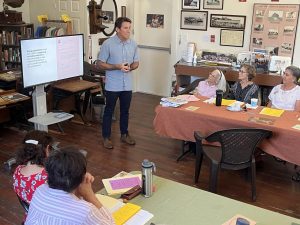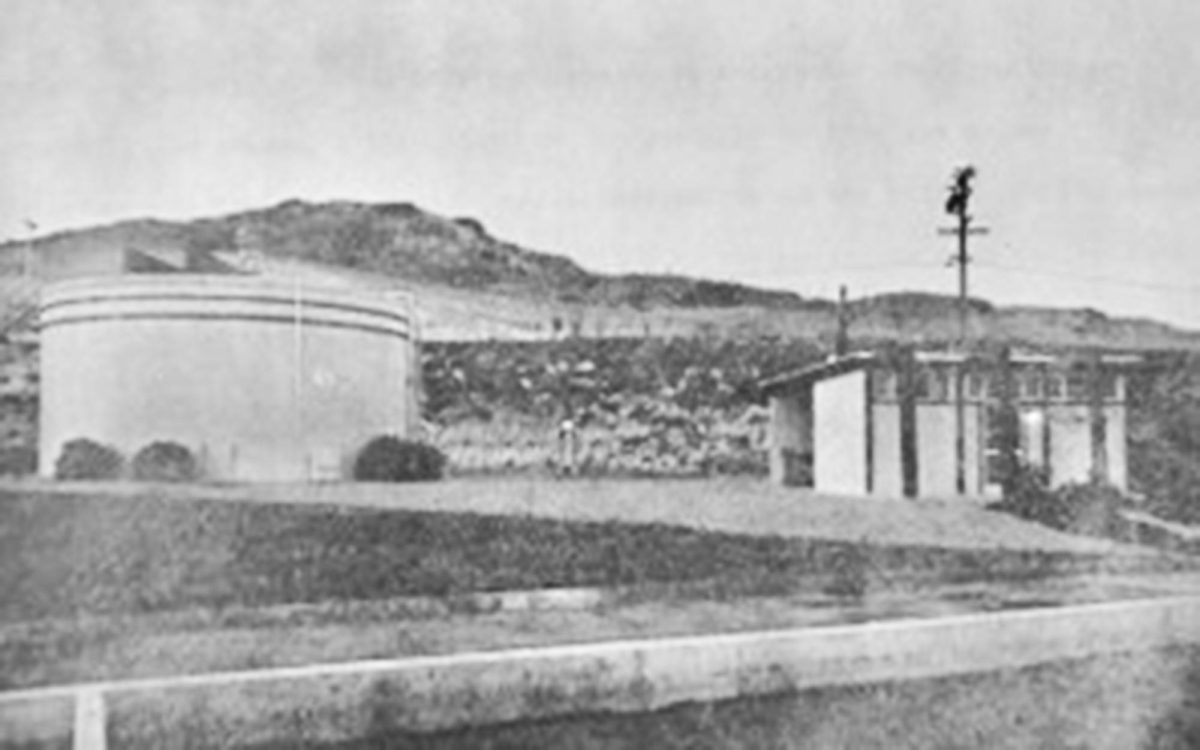If anything can illustrate the concept of public goods, an Encinitas Historical Society board member said, it’s the sewer system.
With that introduction, General Manager Mike Thornton of the San Elijo Joint Powers Authority on Oct. 4 recounted the decades-long evolution of wastewater treatment in Encinitas and Solana Beach.
Thornton’s talk in the 1883 Schoolhouse provided a vivid example for the society’s Public Goods Initiative, which seeks to “make the invisible visible” by identifying essential services and amenities created through collective action and shared investment.
Before the 1950s, Thornton said, wastewater management for local residents and businesses was largely an individual responsibility — typically handled by septic tanks or, in some cases, with discharges directly into creeks, lagoons and the ocean. As the region’s population grew, so did public health concerns about these methods.
For Cardiff-by-the-Sea, the first publicly owned treatment plant was built in 1957. The plant employed basic processes before discharging effluent into the San Elijo Lagoon. Around the same time, Solana Beach constructed a similar facility on the lagoon’s southern shoreline.
 In the early 1960s, to keep wastewater out of the lagoon, local communities pooled resources to build a facility outside the its tidal reach and equipped with an ocean outfall pipeline extending 4,000 feet offshore. The San Elijo Water Pollution Control Facility opened on Manchester Avenue in 1965.
In the early 1960s, to keep wastewater out of the lagoon, local communities pooled resources to build a facility outside the its tidal reach and equipped with an ocean outfall pipeline extending 4,000 feet offshore. The San Elijo Water Pollution Control Facility opened on Manchester Avenue in 1965.
During the 1970s, population growth and new clean water laws spurred major upgrades to increase capacity and improve treatment standards as collaboration expanded to inland communities.

In 1974, local wastewater managers partnered with Escondido to divert that city’s wastewater out of Escondido Creek and into the San Elijo ocean outfall. Agencies worked together to extend the pipeline to 1 1/2 miles offshore. The improvements paid major dividends for water quality in Escondido Creek, San Elijo Lagoon and the ocean.
In 1986, with the incorporation of Encinitas and Solana Beach, the San Elijo Joint Powers Authority formed with two City Council members from each of the two cities serving on its Board of Directors. The local leadership brought a renewed focus on resource recovery, sustainability and system reliability.
After continued treatment upgrades during the 1990s, the San Elijo JPA in 2000 opened its recycled water utility. Today, the system produces more than 500 million gallons per year of drought-resistant, recycled water for irrigation and industrial uses in Encinitas, Solana Beach, Del Mar and portions of Rancho Santa Fe.
The system reduces reliance on imported water while minimizing ocean discharges — a milestone in local sustainability, Thornton said.
Some historical society board members, who said they recalled the days of outhouses and septic tanks, thanked Thornton for his presentation.
“Your program and facilities are working so well, you don’t even think about them,” Chairman Jim Filanc said.
“Sewer systems may be hidden,” Public Goods Initiative Manager Susan Sage said, “but they show us something vital about public goods.”
Adam Kaye writes for local agencies and nonprofits. Nonprofit groups, public agencies, local businesses and organizations of varying interests are welcome to share their news by submitting press releases for publication. Send yours to news[at]northcoastcurrent.com. Submissions are edited for news style and brevity.



